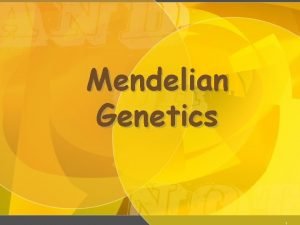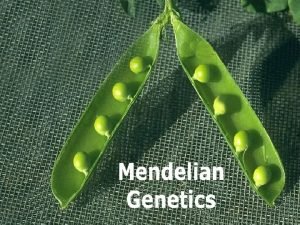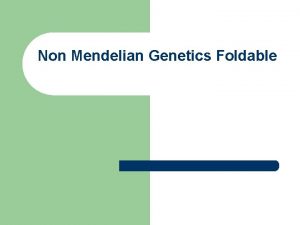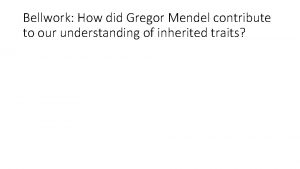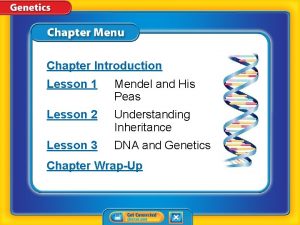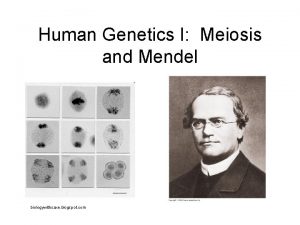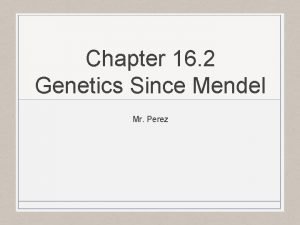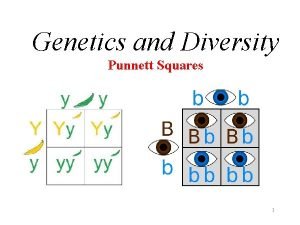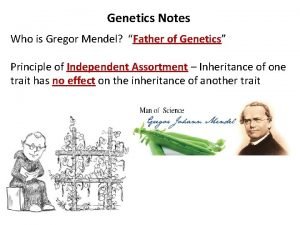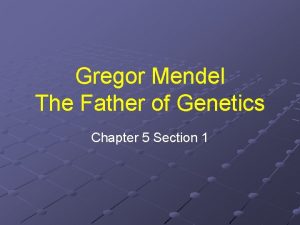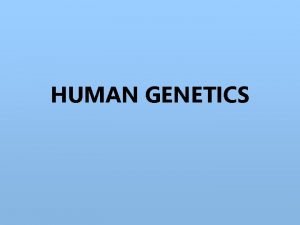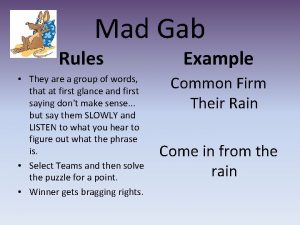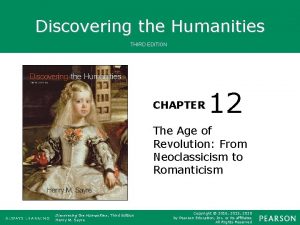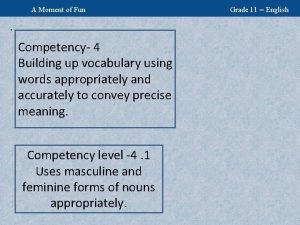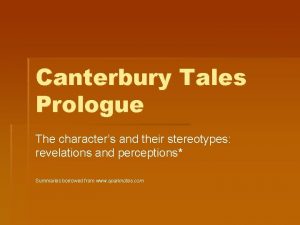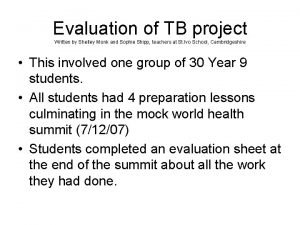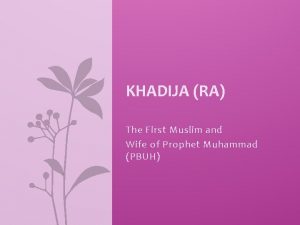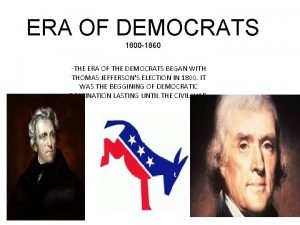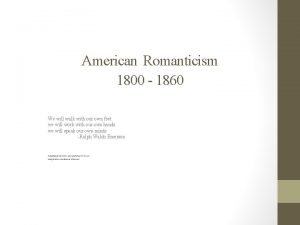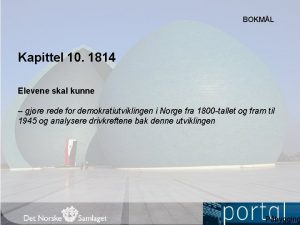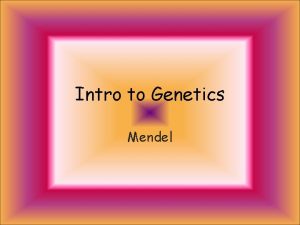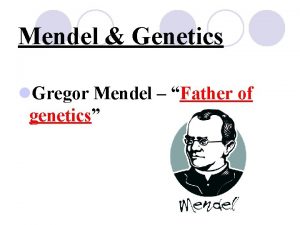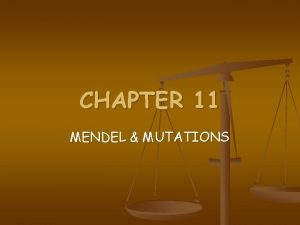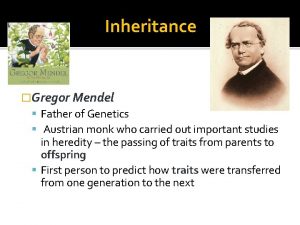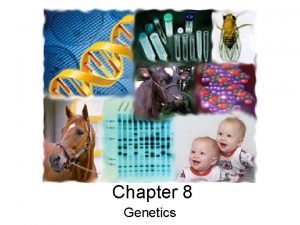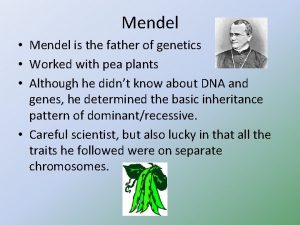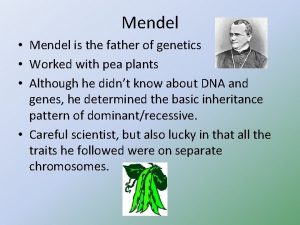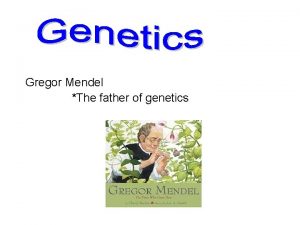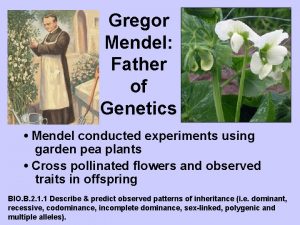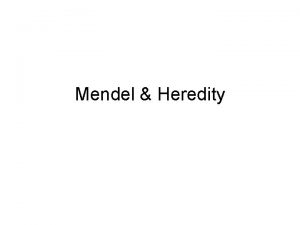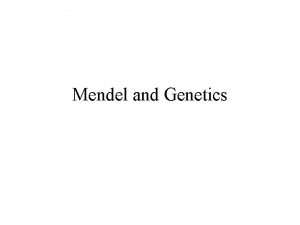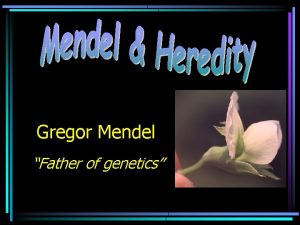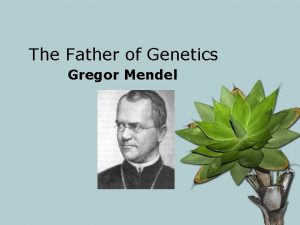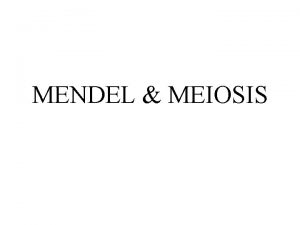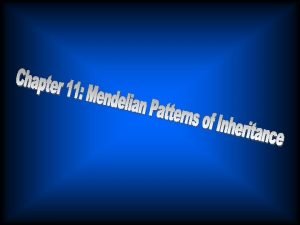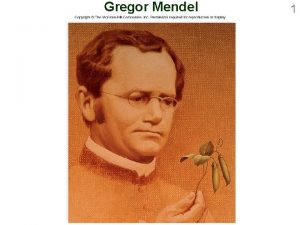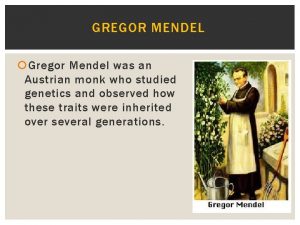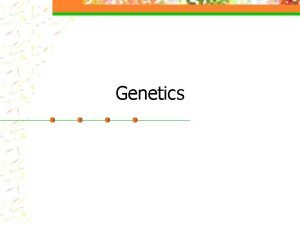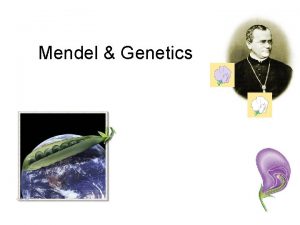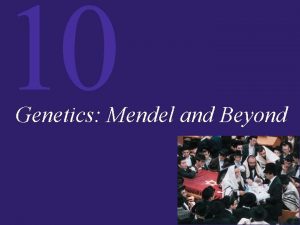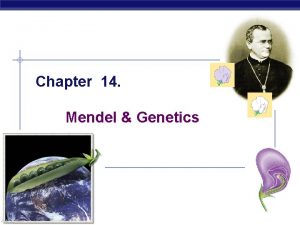Genetics Mendel Father of Genetics 1800 s monk









































- Slides: 41

Genetics

Mendel…. Father of Genetics � 1800 s monk �Studied plant breeding & statistics � 19 th century theories of inheritance : blending �Mendel’s studies showed Particulate inheritance. . �Inheritance of discrete units (genes)

Vocab �Allele – version of a gene �True breeding – both alleles same �Hybrid – produced by crossing 2 true breeding parents (have one of each allele) �P generation : first generation �F 1 generation: offspring of P �F 2 generation: offspring of 2 F 1 individuals

Flower parts 101

Mendel's experiments �Plants self-pollinate �To make crosses Mendel cut off stamens and �cross-pollinated artificially �Each pea seed contains an embryo: �An offspring

F 1 offspring all purple �What does that tell us? �No blending. Only one gene showed up.

To get F 2 offspring cross F 1 x F 1

What does F 2 generation tell us? �White shows back up so…. � 1. must have inherited white gene from purple parent � 2. purple parent must have had 2 copies of gene for color one purple and one white � 3. F 1 s must have gotten one gene from each parent (segregation) � 3. it is possible for one gene to hide another (dominant and recessive genes)

After doing many similar crosses �Mendel determined statistically that which version of a gene (dominant or recessive) �Each parent gave to any given offspring �Was completely random and not linked to what other genes were doing (independent assortment)

Mendel found: � 1) No blending, flowers one color or the other. � 2) All F 1 looked same : called that trait dominant � 3) the other trait was hidden in some of the F 1 s but was passed on to F 2: called that trait recessive � 4) Law of segregation: each parent only gives one of their genes to the offspring hence. . � the 2 parental genes must be separated from each other (segregated from each other) � 5) F 2 crosses led Mendel to formulate the Law of

Descriptors �Since genes(particles) can be hidden use: �Phenotype to describe physical appearance �Genotype to describe genes �In Mendelian Genetics � Dominant genes require 1 copy to be expressed � recessive genes are only expressed if an individual gets 2 copies of the recessive gene

Genotypes �Dominant Traits represented by CAPITAL letters �recessive traits represented by lower case letters �Genotypes: � Homozygous Dominant (AA) � true breeding � Homozygous recessive (aa) � Heterozygous (Aa) hybrid

Punnett squares �Analytical tool for determining probabilities of inheritance �ALL possible Gametes go on top and sides of square …gametes are (1 n) so only one letter �Boxes inside square represent possible offspring �So each must get 2 copies of gene (2 n) so 2 letters

Phenotypes �Ratio of possible offspring in box is … �The probability that type of offspring will be produced � ratio 3 : 1 � 75% smooth : 25% wrinkled

Genotypes �Ratio of possible offspring in box is … �The probability that type of offspring will be produced � ratio 1 : 2 : 1 � 1 SS : 2 Ss : 1 ss

Test Crosses �Done to determine genotype �Cross unknown individual with homo recessive � if any recessive phenotype offspring then. . �Unknown is heterozygous

Types of Crosses �Monohybrid only looks at one gene �Dihybrid looks at probability of inheriting certain alleles of 2 different genes �Each different gene MUST have a different letter of alphabet H = height H = tall h = short C= color C = purple c= white individuals needs 2 of each letter so genotypes: HHCC HHCc HHcc Hh. CC Hh. Cc Hhcc hh. Cc hhcc

Dihybrid Punnett squares �All possible gametes on top �Heterozygous for both traits makes. . � 4 different gametes �Rr. Yy parent makes: �RY or Ry…. r. Y or ry �Each box is a zygote so needs � 2 letter r’s & 2 letter y’s � 2 copies of each gene

�Only parents that are heterozygous for both traits can make 4 different gametes so �Some Punnett squares can be smaller

Multiplication Rule (p 213) �To determine the chances of 2 different events happening together… �Multiply the probabilities of each event � P to get A & B = Probability A x Probability B �Chance to get TTBB �¼ x ¼ = 1/16

�Example Problem : � Tall is dominant to short. � Rigid, inflexible fingers is a recessive trait. � Cold blooded is dominant to warm blooded. �What are your chances of getting a frigid midget with a rigid digit? - both parents are heterozygous for all traits.

Cold blood: ¾ Short: ¼ Rigid: ¼

�Answer : ¾ x ¼ = 3/64

� Addition Rule

Non-Mendelian Genetics = �Any genes that are not straight forward dominant or recessive allele � 1) Incomplete dominance & 2) Co-dominance � 3) Multiple alleles (More than 2 alleles for a gene) � 4) Polygenic traits (traits controlled by more than one gene) � 5) Linked genes – genes that do not assort independently because they are on the same chromosome � 6) Sex linked genes – genes located on X or y

1) Incomplete Dominance �Neither allele completely dominates the other �NO recessive (hidden) allele �Both traits are partially expressed (blending) �Letter symbols… � must be same letter…same gene � must both be capital letters ………. not recessive � use superscripts to differentiate alleles � gene is color so use C � Cw = white Cy = yellow

�Do Punnett squares as normal but heterozygotes show a blended or in-between phenotype �Draw Punnett square for the cross Cw. Cw x Cy. Cy �F 1 will be … �Draw punnett square for F 2

2) Co-Dominance � 2 alleles both fully expressed (NO blending) �Gene for feather color in chickens C � co-dominant alleles for white (Cw) and black (Cb) �Heterozygotes (Cw Cb )have some black feathers and some white feathers (NOT grey)

3) Multiple alleles and Co-Dominance �Human ABO blood types � 3 alleles …. . 2 dominant and one recessive �Gene designated as letter I for �inherited antigenic substance

4) Polygenic traits �Multiple genes determine the phenotype �Example skin color in humans. �Phenotypes show a range of many different each only slightly different from the next. . �Do scientific skills exercise on page 219

5) Linked genes �Linked genes = genes with loci on the same chromosome �Linked alleles more likely to be inherited together than alleles on different chromosomes �The only way liked alleles do NOT end up in the same gamete is if crossing over takes place


6) Sex linked genes �Genes on X or y chromosome �Most often on X �y very small mostly codes for male trait �Writing sex linked genotypes : XX and Xy �Use superscripts to designate alleles �XNXn x XNy

Pedigree Analysis � 1) First step in genetic counseling � 2) Can determine which trait is recessive � a) only recessive alleles can be hidden in one generation and then show up in the next � b) two recessive parents can ONLY have recessive children � 3) Can be used to determine genotypes � a) always know genotype if look recessive � b) if look dominant has at least one…. � c) if parent or child looks recessive …. .

Fork-line Method (Branch Diagram) �Use for Dihybrid or trihybrid cross instead of Punnett square

Forked-line Method Trihybrid

Chromosome Theory of Inheritance �Morgan – first solid evidence �Used fruit flies…good choice because… � produce hundreds of offspring � mature quickly � small /cheap � only 4 chromosomes (3 autosomes, Xy) � mutations created new phenotypes

Morgan’s breakthrough �Natural phenotypes are called wild type (+) �Wild type ff have red eyes �Found mutant male w/ white eyes �Used letter w to represent gene for eye color �And w+ for wild type just w for white �Crossed mutant male with normal femal � w+ x w all F 1 had red eyes so … �Trait is recessive

F 2 generation…. Some white but only males �So differences between sex. �Only difference XX or Xy chromosome

Morgan tried a reciprocal cross �Change which parent has the mutation �All males get white eyes

Supports w gene is on X chromosome �Do Punnett square for X+X+ x Xwy �Do Punnett square for Xw. Xw x X+y �Supports Chromosomal Theory of Inheritance: individual genes are carried by specific chromosomes
 Mendel monk
Mendel monk Mendel monk
Mendel monk Gregor mendel austrian monk
Gregor mendel austrian monk ____________is the austrian monk who experimented with
____________is the austrian monk who experimented with What is the phenotype of a chicken with the genotype fbfw
What is the phenotype of a chicken with the genotype fbfw Chapter 11 biology test
Chapter 11 biology test Mendel's genetics foldable
Mendel's genetics foldable How did gregor mendel contribute to genetics
How did gregor mendel contribute to genetics Altura de andrew garfield
Altura de andrew garfield Do sister chromatids separate in meiosis
Do sister chromatids separate in meiosis Genetics since mendel
Genetics since mendel Mendel genetics
Mendel genetics Mendel squares genetics
Mendel squares genetics Phenotypic ratio
Phenotypic ratio Father of genetics
Father of genetics Who is the father of genetics?
Who is the father of genetics? Forkline method
Forkline method Phenotype example punnett square
Phenotype example punnett square Alastair monk
Alastair monk Monk seal adaptations
Monk seal adaptations David sturdee
David sturdee Madgab rules
Madgab rules Laura monk math
Laura monk math Etienne oehmichen pronunciation
Etienne oehmichen pronunciation Vito acconci seedbed
Vito acconci seedbed Monk by the sea analysis
Monk by the sea analysis Nephew masculine
Nephew masculine Brand monk
Brand monk The lady and the monk
The lady and the monk The monk lines 169-211 characterization
The monk lines 169-211 characterization Shelley monk
Shelley monk Seq monk
Seq monk Khadija monk husband
Khadija monk husband Historia de los derechos humanos
Historia de los derechos humanos Demokratiutvikling i norge fra 1800-tallet og fram til 1945
Demokratiutvikling i norge fra 1800-tallet og fram til 1945 Dtx 1800 mo 120
Dtx 1800 mo 120 Workers 1800
Workers 1800 Harta europei 1800
Harta europei 1800 Contoh garis yang sejajar dan berpotongan
Contoh garis yang sejajar dan berpotongan Era of the democrats 1800-1860
Era of the democrats 1800-1860 Rationalism vs romanticism
Rationalism vs romanticism Demokratiutvikling i norge fra 1800-tallet og fram til 1945
Demokratiutvikling i norge fra 1800-tallet og fram til 1945


